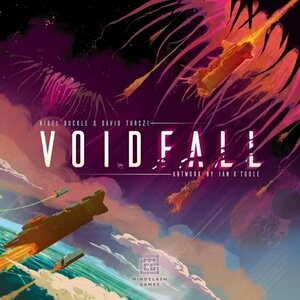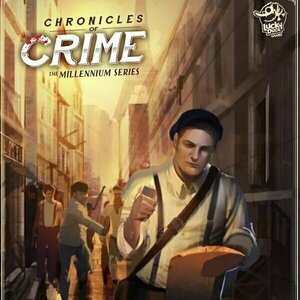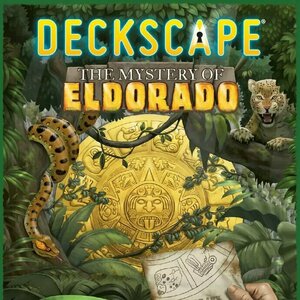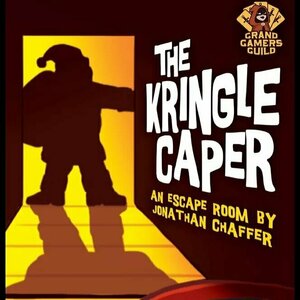Purple Phoenix Games (2266 KP) rated Festival! in Tabletop Games
Nov 24, 2020
Festival! is a competitive set collection game for larger groups, three to seven players. It is set in a medieval kingdom and the game lasts for four festivals. During the game players will be collecting sets of cards to be scored immediately and collecting other cards to be scored at the game’s end.
DISCLAIMER: We were provided a prototype copy of this game for the purposes of this review. These are preview copy components, and I do not know for sure if the final components will be any different from these shown. Also, it is not my intention to detail every rule in the game, but give an idea of how the game plays. You are invited to download the rulebook, back the game through the forthcoming Kickstarter campaign, or through any retailers stocking it after fulfillment. -T
To setup, place the board in the middle of the table. Each player chooses a color of pawn to represent them and places one pawn on the 0 space upon the scoring track and the other pawn in the Festival! area upon the board. The game comes with four different types of cards and each type will be shuffled and placed face-down in stacks as in the photo below. Place the festival marker on either the 0 or 4 space (the rules are not clear, but it is to track the number of festivals, so just choose one) and give the first player busteeple to the youngest player. The game may now begin.
Festival! is played over several turns, but the first three turns will see players taking turns to travel to the different areas of the board and collect cards once they arrive. The initial Festival! area is located between the City and Village areas so a player can choose to move their pawn into either of those areas. As is printed on the board areas themselves, when players arrive in the Country they will immediately draw three Ensemble (green) cards to their hand and their turn is over. A trip to the Village affords the player two Ensemble cards to be drawn, while a visit to the City will allow a player to either draw one Ensemble card OR play as many cards from their hand as they choose. Finally, should the player’s wanderlust urge them to the Palace, they may draw a Palace card to be played to their tableau immediately. Movement from one area to the next is always done to the adjacent area. So if in the Village a player may only move to either the Country or the City. If in the Country a player may only move to the Village.
As I mentioned, the first three turns are head start rounds where players are merely collecting cards to amass a hand (of limit 7) of cards that can be played in sets in their personal tableau. These cards are divided into Exotic, Percussion, Melodic, and Choir cards. Players may play as many cards as they like when in the City, but will score bonus set and superset points if they are able to lay down multiple unique cards in each group. For example, a Horn card is worth one VP alone, but with three other unique Melodic cards earns bonus points for the entire set.
After the first three turns have been played, the first player will then flip a Festival card (stacked on the game board) at the beginning of each turn. It is from this stack that the four “Festival!” cards are located, and they are the time trackers for the game. If the result is “Preparation,” the turns continue as normal with no change. However, should the flipped card be a “Festival!” face, then players within range of the Festival Stages may claim a stage and participate in the festival. Participation in the festival simply means that players may play cards as normally played in the City, but then are entitled to one of the drawn Finale cards. These cards are scored at the end of the game and typically award bonus points for various reasons.
Play continues in this fashion of traveling the board areas to collect cards, performing in festivals, and earning the most amount of VP at game end, which is immediately following the fourth festival. The player with the most VP is the winner!
Components. Again, this is a prototype copy of the game, so the components may be different upon completion of a successful Kickstarter campaign. What we were provided, however, is a good-looking, though muted, game board, a ton of cards, and some painted wooden tokens. The tokens are fine, and I am sure will look different once the game is finalized. The cards are good, an interesting dimension, and the art upon them is good and simple. In fact, the cards’ art remind me of several computer icon sets, specifically Shadow or Sardi (though I use Sweet-Rainbow).
But how does it play? Okay, every time I get a new game I always play it solo multi-handed. During this initial play I had several questions for the designer about scenarios and other oddities that were not covered in the rulebook. He graciously, and immediately, answered my questions and the next play through ran quite smoothly. So I am sure the rulebook will be tweaked quite a bit before final production.
Once I was playing the right way the game ran smoothly and quickly. I found myself planning my turn in advance, however your success truly is dependent on the cards you draw. Ensemble cards are just the instruments, voices, and Minstrel (wild) cards, while the Palace cards are the rule-breaking fun cards. They allow increased travel, protection from certain cards in the deck, and other goodies I won’t spoil here. So having a nice collection of Palace cards can alleviate a lot of the random card draw issues that will plague players who refuse to grab the Palace cards. As I played more and more I found that I generally follow one strategy, but have to switch up tactics depending on my card draws. This is good and okay (not “bad”). Going in with a plan of attack is great, and being able to become flexible mid-game is enjoyable.
Overall this one is surprising to me because I was initially frustrated with the vague rulebook, but once I truly knew the real rules and how everything played together I found a real fondness for it. Festival! will probably never make it close to my Top 10 Games of All Time list, but for larger groups who are tiring of the hidden traitor or social deduction games, this one is a breath of fresh air. It can handle up to seven players, and is an easier teach than many other games for mid-to-large groups.
So if you are looking for something different for a weird player count, and you need some more medieval rock star games in your collection please check out Festival!. (Do I need the period there or am I covered with the exclamation point from the title of the game? I was not an English major.) I think you will be pleasantly surprised at how this unassuming set collection game (with aspects of take-that which I did not explore here) will perform. I am looking forward to following the Kickstarter campaign set to launch in Spring 2021, so keep it on your radars, people.
Purple Phoenix Games (2266 KP) rated Chronicles of Crime: 1900 in Tabletop Games
Apr 23, 2021
If you have been following us for a while now you have probably noticed we have published another title from the Millennium Series – Chronicles of Crime: 1400. While that title takes place in the year, well, 1400, this new title is set 500 years later in Paris. How do these games compare? What about the link to the original Chronicles of Crime (review to be posted later)? Should one purchase copies of all Chronicles of Crime games?
Chronicles of Crime: 1900 (which I shall refer to as CoC1900 from here) is a cooperative campaign, deduction, storytelling, puzzle solving adventure game, but I prefer to play it, and its relatives, solo. In it, the player(s) take control of the journalist Victor Lavel, a descendent of the main character from CoC1400. Victor has a limited amount of time to complete his investigation and return the scoop to the local newspaper by which he is employed. Players will be tackling the investigations of our noble hero in attempts to solve the case that is presented.
DISCLAIMER: We were provided a copy of this game for the purposes of this review. This is a retail copy of the game, so what you see in these photos is exactly what would be received in your box. I do not intend to cover every single rule included in the rulebook, but will describe the overall game flow and major rule set so that our readers may get a sense of how the game plays. For more in depth rules, you may purchase a copy online or from your FLGS. -T
To setup, place the main card holder board on the table. Anywhere. I called it. Next, keep the card decks in order (or don’t) and place them near the board. Similarly, place the location boards on the table and ready the main newspaper board for play. Launch the Chronicles of Crime app on a device, choose 1900, and select the scenario you wish to play. The app will drive the remainder of the game, so hold onto your butts!
How do I explain this game succinctly? Well, each of the cases will involve players traveling to different Location Boards and meeting Characters at these locations. Many cases will be involving several Special Items and, new for the 1900 version, Puzzle Cards that players will need to solve or use in special ways in order to progress with certain leads. These Puzzle Cards do not really give the story away or anything, but are merely tools to be used to help solve the cases.
By using the app and scanning the QR codes on the boards and cards players will be learning about the case, viewing the scene of the crime(s), inspecting items, and chatting up locals for information. Play will continue not so much in “rounds” but until the players have enough evidence and a good handle on the situation enough to return to the paper’s office to report to their coworkers all the details of the crime(s) by scanning answers to their questions about the case. The app then assesses the accuracy of the answers and outputs a score. Based on the score achieved players can play again to pick up clues they missed along the way or try another scenario entirely.
Components. As with all CoC games I have played, the components are simply wonderful. Most of what is in the box is cardstock of varying thickness, but the art is what really stands out. This is a gorgeous game and when it is displayed on the table, people become fascinated by its presence. Then when the onlookers see an app driving the gameplay they are hooked. I have heard complaints from other reviewers that the Character cards in the game are lacking in variation, and I would have to agree. Yes, it is set in 1900 Paris, but all the Character cards feature white people, most of whom seem to be upper crust, and with most of the males sporting an awful mustache. So I get that complaint and agree. With inclusivity and diversity being major hot issues currently, you would expect to see more of it in our industry. I would have liked to have come across more diverse characters, and maybe a mini expansion can add many alternate art characters to the game.
All in all I loved this theme of Chronicles of Crime. Being set in Paris and following a young investigative journalist is a nice twist on the protagonists commonly featured in these games. The gameplay is the same as previous versions of CoC, save for the new Puzzle cards. I do enjoy their addition, and look to find more of these in future versions. I love the Chronicles of Crime system so I was bound to love this one as well.
Now, should you buy this version if you already have base Chronicles of Crime? Sure! Why? I like this one because it adds a different mechanic to the game with all-new scenarios, and I enjoy having more of a good thing. I think I personally prefer the theme in 1400 more, but 1900 is a great addition to the family. If you are someone who has and enjoys the base CoC, or any of its iterations, and are looking for more content to devour, then definitely grab a copy of 1900. If you are new to the system, I say go ahead and start with 1900. The Puzzle cards do not add enough complexity to take it out of reach for beginner gamers or those who enjoy lighter games, but certainly add a new and welcome layer to the series. Purple Phoenix Games certainly recommends this one to all our fans. Can’t get enough Chronicles of Crime? Grab 1900. Want to start in the series but London or Medieval times don’t do it for you? Grab 1900. Like tons of portraits of mustachioed white dudes and floofy ladies? Grab 1900. Whatever your motivation, play the game and let me know how you score. I am not advertising my first score here because I am mortified by my performance. (I did get better on subsequent plays.)
Purple Phoenix Games (2266 KP) rated Deckscape: The Mystery of Eldorado in Tabletop Games
Mar 12, 2021
Imagine yourself trapped on a jungle island after your plane crashes. Or being locked within a pyramid whilst visiting Egypt. These are the settings for the pair of games we reviewed and I really cannot and will not be going further into a lot of detail so as to avoid any spoilers as best I can.
DISCLAIMER: We were provided a copy of both The Curse of the Sphinx and The Mystery of Eldorado for the purposes of this review. These are retail copies of the games, so what you see in these photos is exactly what would be received in your boxes. I will describe the overall game flow and major rule set so that our readers may get a sense of how the game plays. For more info, you may purchase a copy online or from your FLGS. -T
To setup a game of Deckscape, open the box and take out the cards. You are now ready to play. Seriously. No rules to read. Nothing to teach others. Just read the top card and do as it says. You have now begun your adventure!
Playing the games involves players (or a solo player) encountering cards in the 60-card deck in order to solve puzzles and use items found to best finish the scenario. There are no turns in these games, and players are encouraged to discuss possibilities before committing to answers to the puzzles. Randy from Dora and the Lost City of Gold would be so happy to be figuring out “Jungle Puzzles” and “Pyramid Puzzles.”
Each card is either a puzzle or an item and each card will more than likely be encountered throughout the game. Players are trying to figure out the puzzle clues and best solve them. Incorrect guesses will result in costly errors that affect endgame scoring. Sometimes correct guesses will allow the players to erase errors or give other positive clues.
Once the players have made their way through the game solving puzzles and riddles they will consult the table at the end to see how well they scored. Usually time is of the essence, and finishing the games sooner is better than later. Once the game is over and the score tallied the game owner may gift the game away as the final result is known and replaying is kinda cheating.
Components. Okay, these games are small boxes full of large cards. There are 60 cards in each game and the cards are beautifully illustrated and laid out well. We had no problems reading anything or deciphering any part of the games, so thumbs up on components from us.
Gameplay is a little polarizing, we found. I like the flow of the game and puzzles within. My wife, however, couldn’t stand them. But she later admitted to now understanding that she just does not enjoy escape room styled board and card games. That said, these games play more like Choose Your Own Adventure games than the typical EXIT/Unlock style games, as most (if not all) cards in Deckscape require players to complete them before moving to the next card in numerical order with either a success or penalty. This can rub players the wrong way if they are used to the other style of escape room games. It was no problem for me, and I enjoyed my plays.
What I liked most about these games is that the story is easy to follow and the puzzles mostly make logical sense. A few of them stumped me, but luckily players may find helper cards to give clues to puzzles in the game. We relied on these helpers a few times, but I did not feel like we were consulting them for every puzzle. So that’s a definite positive. I also liked the thematic immersion. For a card game I felt drawn into the stories and wanted to complete them as well as I could.
What I disliked most about these games is the fact that you end up encountering every card or nearly every card. The intrigue of other escape room games I have played is wondering what was on some of those other cards. Or what did I miss on a card that I should have noticed? While you get SOME of that here, I found Deckscape to be more entry-level in difficulty. That is certainly not a bad thing for most gamers. We were expecting something different than what we played, and I think that unfortunately immediately put us off at first.
However, I played the second game solo and I liked it quite a bit. I think I mostly liked it because I didn’t have my wife around to figure out the puzzles with me and I was truly all alone. This added to my anxiety to finish well, or finish at all! I definitely cannot see myself playing these games with the full compliment of six players as I feel I would be too overwhelmed with people shouting out their guesses and trying to parse everything. But that’s just me. I prefer these with low player counts.
All in all these games are pretty good, and a decent something different from the other games in the same style. If you have yet to try Deckscape and like escape room games in general, I reccomend you give them a try. They are quick (and even quicker as your goal is finish in a short amount of time for the best scores), easy to play with zero teaching and setup time, and gives a great amount of puzzles to decipher. Purple Phoenix Games gives the Deckscape system of games an unsure-but-you-seem-confident-about-your-answer-so-let’s-just-go-with-yours 6 / 12. If you see them on the shelves pick one up and try it out. Add these to your growing collection of escape room games for show, or play them and pass them along, as I intend to do.
(Note: I usually add a messy components photo at the end of my reviews, but I don’t want to spoil anything, so I’ll just throw some cards down that won’t really ruin anything at all.)
Purple Phoenix Games (2266 KP) rated The Kringle Caper in Tabletop Games
Dec 18, 2021
The Kringle Caper is a Christmas-themed escape room type card game. It consists of 18 cards and I found it much more difficult than its sibling, The Independence Incident, which I reviewed in July.
DISCLAIMER: We were provided a copy of this game for the purposes of this review. This is a retail copy of the game, so what you see in these photos is exactly what would be received in your box. I do not intend to cover every single rule included in the rulebook (as there is none), but will describe the overall game flow and major rule set so that our readers may get a sense of how the game plays. For more in depth rules, you may purchase from your FLGS. -T
To setup, open the flaps of the box containing the cards, navigate to the provided website to launch a web-based companion app, and the game may officially begin!
As I do not wish to spoil anything about the game, I will merely state here that following directions, completing puzzles, and knowing a little something about the Christmas holiday will benefit players immensely. Sorry I cannot say more, I would rather you all experience it for yourselves.
Components. This game consists of 18 double-sided cards and a nifty little box to hold it all. The cards are all nice quality, and feature very specific artwork on them. I have no complaints about the components at all here. Grand Gamers Guild always provide great quality games.
Ok, be mad at me if you like, but I just cannot bring myself to go into great detail about the game mechanics, how to play, or what is really included. Just know that this is probably a game you will play once and pass along, or keep several years between plays so that it doesn’t become too repetitive and easy to solve.
I know reviews like these could be considered a cash grab normally, but we don’t accept payment for any of our reviews, so I will use this section to lay out what I like and what I do not like about this installment. I just love the idea of these types of games: small decks that provide so many decisions to be made, or puzzles to solve, and riddles to mull over. Personally, I prefer The Independence Incident, but not because I think this version is weaker, but rather because I was much more successful solving the cards by myself. It is difficult to recruit some of the gamers in my life to play these types of games, so if it can be played solo, that’s the option I will take. That said, I’m sure most people enjoy things more if they are inherently good at them, and such is the case for my preference between the two. That said, Purple Phoenix Games gives this one a festive, but sneaky, 4 / 6. I am glad to have played it, and look forward to passing it along to someone else who has yet to enjoy it.
I will say that I believe all gamers should try both versions, and I am excited to find and try the Halloween and Valentine’s Day versions as well. If you also enjoy these quick escape-room-style card games, give this one a shot, but please promise me you will also try the others as well. Now get out there and solve this mystery, little elf!

DAW Remote
Music and Productivity
App
DAW Remote is a wireless DAW(Digital Audio Workstation) software controller, especially optimized...

Order & Chaos Online
Games and Stickers
App
Enjoy the thrill of an epic adventure in the most acclaimed MMORPG on your iPhone, iPad and iPod...

FL Studio Mobile
Music
App
Create and save complete multi-track music projects on your iPad, iPhone or iPod Touch. Record, ...

Combo Crew
Games and Entertainment
App
In a world where a fist to the face is a perfectly viable solution, Mr. Boss has it all. Now he...

Call of Duty: Black Ops Zombies
Games and Entertainment
App
The Call of Duty®: Zombies phenomenon has risen back to life. Adapted from the best-selling...




